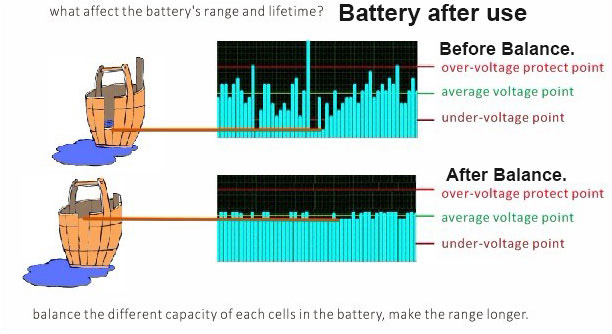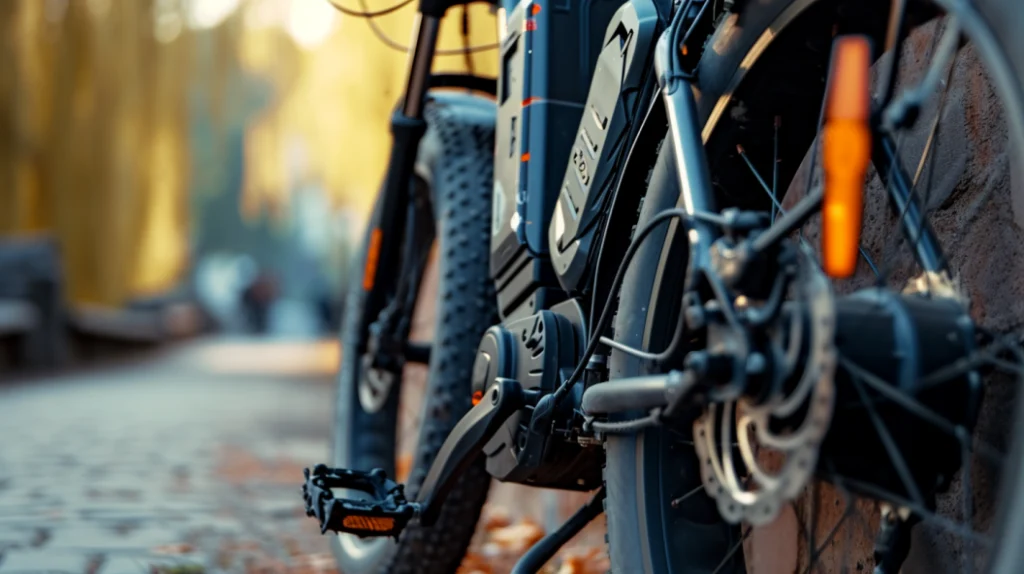The latest eBike battery technology has enabled greater distances and less weight. It also has changed the fixing of the battery to the frame with more flexibility. Electric bikes, also known as e-bikes, have exploded in popularity in recent years as an eco-friendly and efficient mode of transportation.
A major driving force behind the rise of e-bikes is the continuous advancement of battery technologies that power these electrified two-wheelers. Batteries play a pivotal role in e-bikes by storing and delivering energy to the electric motor, enabling riders to pedal with ease and reach higher speeds over longer distances per charge.
This article provides an in-depth overview of the key battery technologies utilized in modern e-bikes, factors impacting performance and selection criteria, and emerging battery tech that promises to transform e-bikes.
Table of Contents
The Surge in E-bike Adoption with the latest eBike battery technology
Once viewed as a niche product, e-bikes have firmly entered the mainstream thanks to their versatility and practicality as an urban mobility solution. Whether commuting to work, running errands, or recreational riding, e-bikes appeal to a wide spectrum of cyclists.
Annual e-bike sales in the United States reached an estimated $915 million in 2021, jumping a whopping 240% from pre-pandemic levels. Major contributors fueling this growth include advancements in battery range and efficiency, expanding e-bike infrastructure, rising fuel costs, and greater awareness of e-bikes’ health and environmental benefits.
As more city dwellers seek to reduce their carbon footprint by embracing micromobility options, the global e-bike market is forecast to expand at a compound annual growth rate of 8.5% from 2022-2030, approaching $92 billion in value. With momentum on its side, all signs point to e-bikes cementing their status as a staple urban transportation method. But what exactly makes e-bike batteries so integral to rider experience and market growth?

Critical Role of Batteries in E-bike Functionality
In the simplest of terms, e-bike batteries supply power to an electric motor that provides pedal assistance. Yet the battery has an expansive impact on almost every facet of e-bike performance and design.
Since the battery contains the energy storage capacity of an e-bike, it largely determines the bike’s potential range, or distance traveled on a single charge. A higher battery capacity equates to more range.
Additionally, battery voltage affects motor torque and pedaling power output. Other battery-dependent e-bike characteristics include weight distribution, speed, component longevity, and cost.
When it comes to product selection, discerning e-bike buyers pay close attention to battery specifications as key indicators of quality and value. Subpar batteries plague the affordability of lower-end e-bikes, while premium batteries raise performance ceilings for high-performance models.
As riders become more acquainted with the technology and sophisticated in their needs, battery quality and technological capabilities will increasingly sway purchase decisions and brand loyalty. Let’s delve into today’s most prominent e-bike battery technologies vying for consumer attention and market share.
TYPES of eBike Batteries making up the latest eBike battery technology
Lithium-Ion Batteries – The E-bike Staple
Among the various battery energy storage systems available, lithium-ion batteries (LIBs) represent the prevailing choice for modern electric bikes.
Accounting for approximately 70% of the e-bike battery market, lithium-ion batteries check off the essential boxes riders demand – ample power density, lightweight construction, minimal maintenance needs, and consistent performance over hundreds of charge cycles.
Rechargeable lithium-ion batteries consist of cells containing positively charged lithium ions and negatively charged electrodes immersed within an electrolyte solution.
As a rider engages the motor, chemical reactions transfer lithium ions between the anode and cathode, generating electrical flow and spinning the motor. Compared to traditional lead-acid batteries, lithium-ion batteries store over twice the energy in a considerably lighter, more compact construction.
They also lack memory effect issues that plague the performance of alternative chemistries.
Several common types of lithium-ion batteries have gained traction in the e-bike industry, each with unique advantages and tradeoffs…
Lithium Iron Phosphate – Safe and Stable latest eBike battery technology
Lithium iron phosphate battery cells denoted as LiFePO4 or LFP, utilize iron phosphate as the positive cathode and graphite on the negative anode side. Among lithium-ion battery variants, lithium phosphate cells prioritize safety and longevity over maximizing power density.
With excellent thermal and chemical stability, LFP batteries carry minimal fire or explosion risk – a paramount consideration for cycling in crowded urban environments.
LFP batteries tolerate high currents extremely well, allowing for speedy charges without degrading cell longevity. Riders can expect over 1,000 recharge cycles before any noticeable performance drop-off.
While delivering slightly less range and power compared to alternatives, LFP batteries provide outstanding value given their long operational lifespans and robust safety credentials.
Lithium Manganese Oxide – Power and Affordability
Abundant in supply and relatively easy to synthesize, lithium manganese oxide or Li-ion batteries built on LiMn2O4 chemistry offer an affordable option prioritizing high specific energy.
Compact lithium manganese oxide packs an impressive punch for its size, allowing efficient power transfer for zippy acceleration and hill climbing capacity. With battery expenses representing a sizeable portion of e-bike costs, reasonably priced LiMn2O4 cells help rein in expenses while facilitating respectable performance.
On the other hand, lithium manganese oxide batteries tend to have shorter lifespans of only 400-700 cycles before requiring replacement. Due to their tightly packed energy density, charging or operation in extreme temperatures poses fire risks if cells become unstable.
Still, the high performance-to-price ratio makes LiMn2O4 technology an attractive choice for many e-bike builders. Careful charging and handling allow consumers to reap the benefits while minimizing downsides.

Lithium Nickel Manganese Cobalt Oxide – The Triple Threat
Another popular lithium-ion formula, LiNiMnCoO2 batteries, referred to as NMC or NCM, utilize a clever cocktail blending nickel, manganese, and cobalt as cathode material paired with a graphite anode.
By finding the optimum ratio between the three key ingredients, manufacturers dial in the desired characteristics of energy density, power transfer, stability, and battery lifespan. For example, enhancing nickel content boosts energy storage capacity while more manganese improves thermal durability.
Cobalt helps electrons flow quickly during charge and discharge but also raises expenses due to scarcity.
Fine-tuning the NMC multi-metal concoction allows batteries to achieve top-tier performance in several categories. As a result, NMC Li-ion batteries strike an admirable balance prized by e-bike designers demanding well-rounded capabilities.
One tradeoff does come down to cost, as NMC batteries carry a price premium reflecting their performance capabilities and manufacturing complexity. Continual progress in lowering cobalt content through nickel and manganese augmentation helps ease costs while upholding energy delivery standards.
Emerging Advances Expanding E-Bike Battery Capabilities using the latest eBike battery technology
While lithium-ion chemistries dominate the current e-bike landscape, emerging battery technologies promise to unlock even greater ranges, faster charges, and extended operational lifespans. Ongoing research tackling lithium-ion limitations gives rise to exciting developments on the horizon.
Solid State Batteries – Increased Stability and Energy Density
Conventional lithium-ion batteries rely on liquid electrolytes to transport lithium ions between the anode and cathode. Unfortunately, liquid electrolytes bring flammability risks and are susceptible to leaks or damage with improper handling.
An alternative methodology replaces the liquid electrolyte with a solid material such as ceramics or glass. Referred to as solid-state batteries, this design greatly improves durability and thermal resistance while eliminating leakage concerns.
Solid-state batteries also enable thinner electrodes and electrolytes to be packed more tightly, significantly increasing volumetric energy density. Researchers have demonstrated energy density improvements upwards of 50-70% compared to traditional lithium-ion batteries.
This compact construction translates to lighter overall vehicle weight and more onboard energy storage capacity. Additional advantages include faster charging capabilities and estimated lifespans exceeding 1000 cycles.
While promising, prohibitive expenses and manufacturing difficulties have thus far stifled mainstream access. But as research institutions and battery startups fine-tune processes and scale production, solid-state batteries are poised to become a major e-bike game changer.
Lithium Sulfur Batteries – Dramatically Higher Density
An even more radical departure from conventional lithium-ion battery architecture, lithium-sulfur batteries utilize elemental sulfur as the cathode material rather than metal oxide blends. Though still in early developmental stages, Li-S batteries’ theoretical energy density clocks in at a staggering 2,500 Wh/kg compared to 250-350 Wh/kg for traditional lithium-ion. Researchers also report excellent performance maintaining 85% capacity over 200 cycles in testing.
Such a leap promises to either deliver an exponentially greater range from similarly sized battery packs or enable slimmer batteries to store equivalent energy as today’s cells. However, limited cycle life spanning a few hundred charges before degradation remains a key obstacle. Refinements to electrode protection barriers have shown encouraging progress recently though. If lifespans can extend closer to the 1,000 cycle marker, Li-S batteries’ exceptionally light and compact design could overhaul e-bike range capabilities compared to lithium-ion counterparts.
Graphene Batteries – Taking Charge, Ultrafast
Graphene, a form of carbon arranged in a honeycomb lattice just one atom thick, has attracted intense fascination over its electronic applications. Touted as the world’s thinnest, strongest, and most conductive material, graphene demonstrates game-changing capabilities – including charging a battery in mere seconds. Graphene-enhanced lithium-ion batteries are reported to reach full capacity in only five seconds, compared to 45 minutes for conventional Li-ion cells.
Rather than faster chemical reactions, graphene enables simpler surface interactions facilitating lightning-quick ion transport between electrodes. Additionally, graphene coatings enhance cell stability and conductivity while adding structural reinforcement against cracks or impacts. Such ultrafast charging opens possibilities for conveniently powering e-bikes through rapid charges rather than needing to disconnect the battery for overnight charging. Short pit stops could thus fully replenish dwindling batteries in about the same time needed to fill up a water bottle.
Factors Impacting E-Bike Battery Selection
While reviewing energy specs and capabilities provides a baseline understanding of e-bike battery technologies, several other interrelated factors influence real-world performance and appropriate applications. Determining the optimal battery type for a rider’s particular e-bike and usage requires examining this suite of interacting considerations.

Range & Riding Style for the latest eBike battery technology
The battery’s total energy storage capacity, measured in Watt-hours (Wh), sets range limitations for an e-bike. So naturally, the required range ranks among the top priorities during battery selection. More range provides flexibility for longer rides but requires greater battery capacity and thus size/weight. Urban commuters may prioritize lighter packs around 400 Wh for short trips under 20 miles. Yet recreational riders venturing further between charges may prefer extra range cushion reaching 750-1000 Wh range.
Also important is accounting for riding conditions affecting range, namely hills, headwinds, payload weight, max speed, and pedal assist levels. Conservative range estimates based on power-draining conditions prevent unexpected battery depletion before reaching destinations. Discussing typical riding profiles and terrain with e-bike sellers ensures choosing batteries suited for the purpose.
Recharge Time on the latest eBike battery technology
Range anxiety vanishes for e-bikes capable of quickly replenishing batteries to continue journeys. Faster recharge times also provide convenience and flexibility for hectic schedules. Standard e-bike batteries require 4-6 hours for a full charge, making overnight charging most practical rather than interrupting days for immobile charging downtime. Some premium batteries now offer rapid charging capabilities, though extremely quick charging can shorten the overall lifespan. Finding the sweet spot balancing charging speed and longevity prevents hassling with constantly depleted batteries.
Weight Distribution with the latest eBike battery technology
Motor positioning differs amongst e-bike models, with common configurations being front hub motor, rear hub motor, or centrally located motor driving pedal gear shafts. Battery weight and location relative to the motor impact handling and weight distribution greatly between designs. Heavier batteries up front maintain responsive steering but increased weight over the front axle causes more bounce when traversing bumpy terrain. Rear distributed battery weight offers better absorption and stability however limits traction for climbing steep hills. Centered batteries enable balanced weight distribution for optimized performance potential.
Safety rating for the latest eBike battery technology
Lithium-based batteries carry innate chemical volatility concerns, especially when produced with thin separators and electrolytes maximizing energy density. Lower-quality cells risk possible thermal runaway if damaged or overcharged. Seeking reputable brands and chemistries with proven safety track records minimizes any fire or leakage risks. LFP batteries for example offer excellent stability for peace of mind during battery lifespan.
Identifying usage priorities and tradeoffs helps zone in on suitable e-bike battery specs fulfilling daily transportation needs. Test riding different e-bike models also grants invaluable experience feeling how battery location and support electronics integrate for optimized ergonomics and handling.
Battery Management Systems and Replacement Costs
Sophisticated battery management systems help lithium-ion packs maintain safe operating conditions and maximize lifespan by monitoring individual cell voltages and temperatures. However, even top-notch cells gradually lose charging capacity as cycles accumulate. Typically e-bike batteries dwindle to 70-80% of original capacity after 500 charges, requiring replacement every 2-3 years for frequent riders. Replacing depleted batteries often rivals initial e-bike prices, so factoring in replacement costs helps assess real long-term value when comparing options..
Future E-Bike Battery Tech Developments
Today’s lithium-ion batteries already enable e-bikes to fulfill lengthy commutes or all-day adventure riding between charges. However, emerging battery technologies promise to reshape expectations around range constraints, charging speed and convenience, weather resilience, and operational lifetimes. The coming decade will undoubtedly usher in dynamic innovation in the e-bike battery space.
Early leaders in next-gen batteries are already transitioning from labs to lightweight prototypes and initial fleet demonstrations. Solid-state batteries can potentially double range while charging in under 30 minutes. Ultra-thin graphene surface layers may allow adding hundreds of miles through five-second pit stops. While still requiring refinement before reaching mainstream integration, rapidly progressing capabilities could soon reshape consumer norms and preferences.
Cutting-edge batteries may introduce drastic performance leaps, but likely at premium prices initially. However, tech improvements historically cascade downmarket over relatively short timeframes. Within just a few years of early adoption, today’s $2,000 high-end e-bikes match or exceed capabilities only available on $5,000 models previously. Similar trends will likely transpire with batteries as production scales and manufacturing efficiencies kick in.
Regardless of chemistry or architectural details, the common thread is batteries enabling electrified transportation technologies liberated from fossil fuel dependence. As world cities continue grappling with traffic congestion and air quality issues, e-bikes present solutions integrating seamlessly into existing infrastructure while slashing per-mile emissions. Just a single replaceable component, the humble battery, empowers this sustainability and mobility revolution to spread across the globe. Ongoing innovation promises to keep e-bikes rolling smoothly into greener cities for decades to come.
Final Thoughts on the latest eBike battery technology.
E-bike battery technology has progressed tremendously over the past decade, enabling electric bikes to become a viable mainstream transportation option. Lithium-ion batteries currently dominate the e-bike industry due to their high energy density, low weight, and favorable longevity. Advances in materials and manufacturing allow various lithium-ion formulations to be tailored to the performance and cost objectives of e-bike manufacturers.
While further refining lithium-ion chemistries will continue incrementally improving e-bike range, charging, and lifespan, emerging battery breakthroughs could truly transform the status quo. Both incremental and disruptive advances on the horizon ensure e-bikes will offer continually improving capabilities and value for urban commuters, recreational riders, and beyond. Electrified micromobility is here to stay.
FAQs
Q: How long do e-bike batteries last?
A: The average e-bike lithium-ion battery lasts 500-1,000 charge cycles. Well-maintained batteries typically last 2-3 years for frequent riders before needing replacement.
Q: How long does an e-bike battery take to recharge?
A: Most e-bike batteries require 4-6 hours for a full charge. Newer rapid-charging batteries can fully recharge in under an hour, but may impact battery lifespan.
Q: What emerging battery tech looks most promising for future e-bikes?
A: Solid-state batteries offer substantially higher energy density and safety compared to lithium-ion batteries. Also worth watching are lithium-sulfur batteries boasting 2-3x the energy density and graphene surface coatings enabling 5 second charging.






